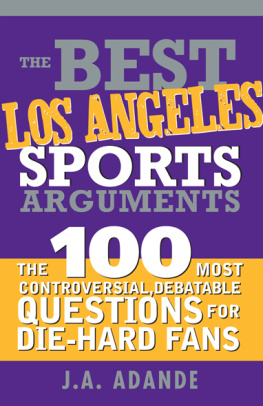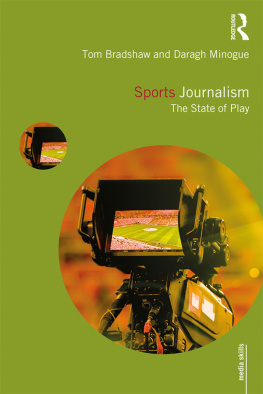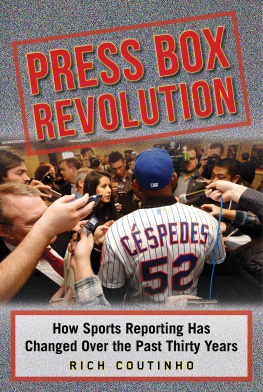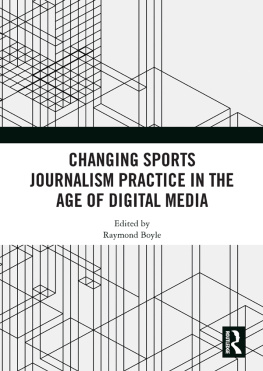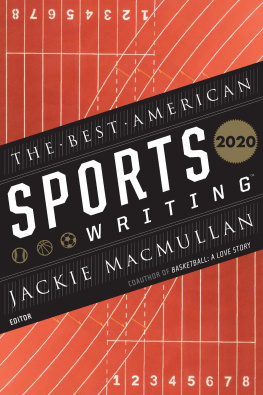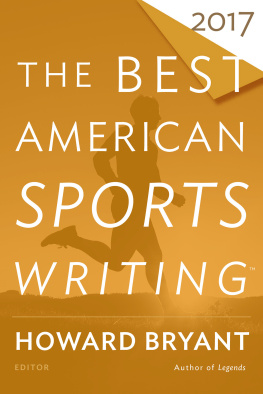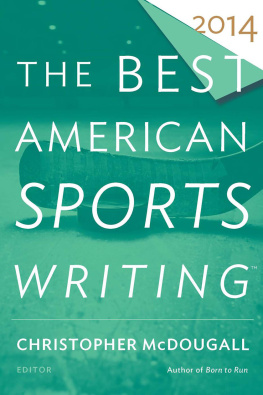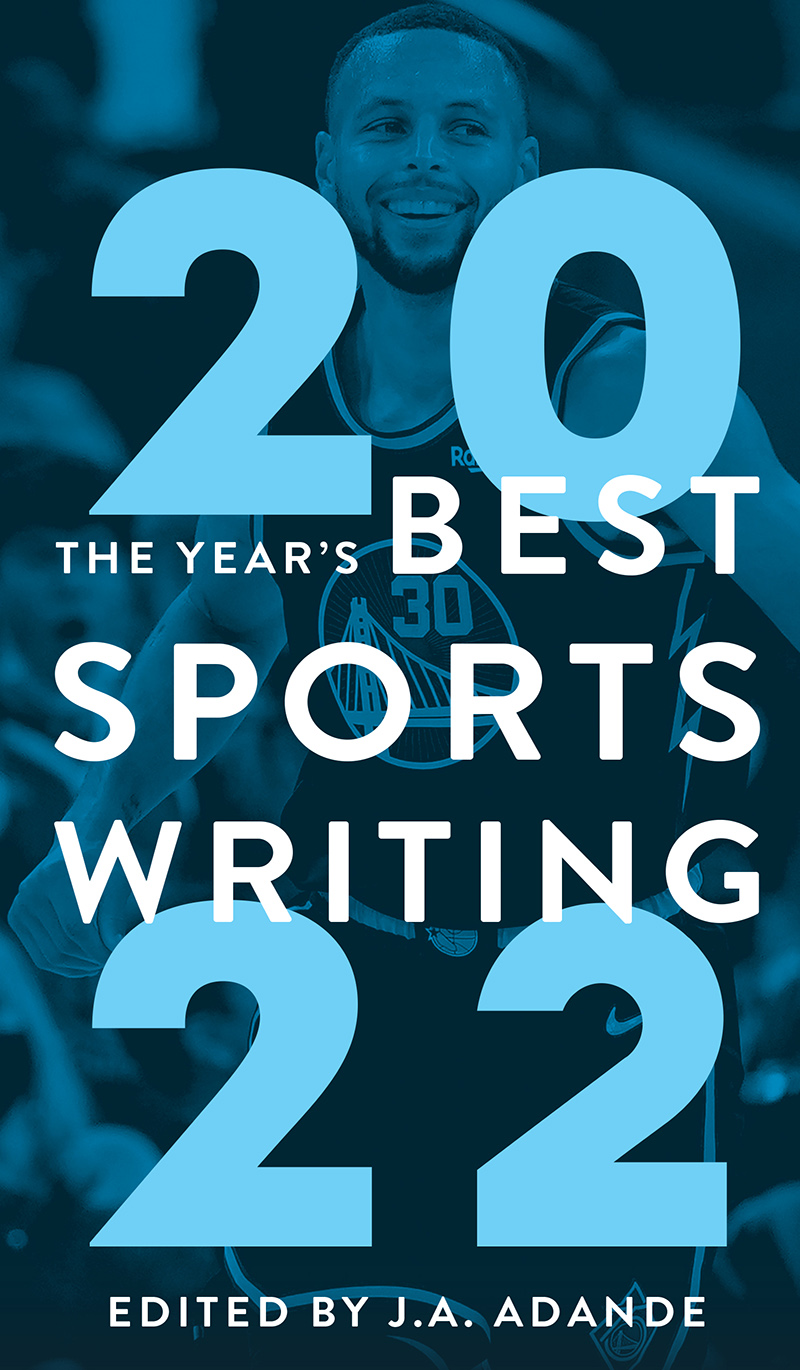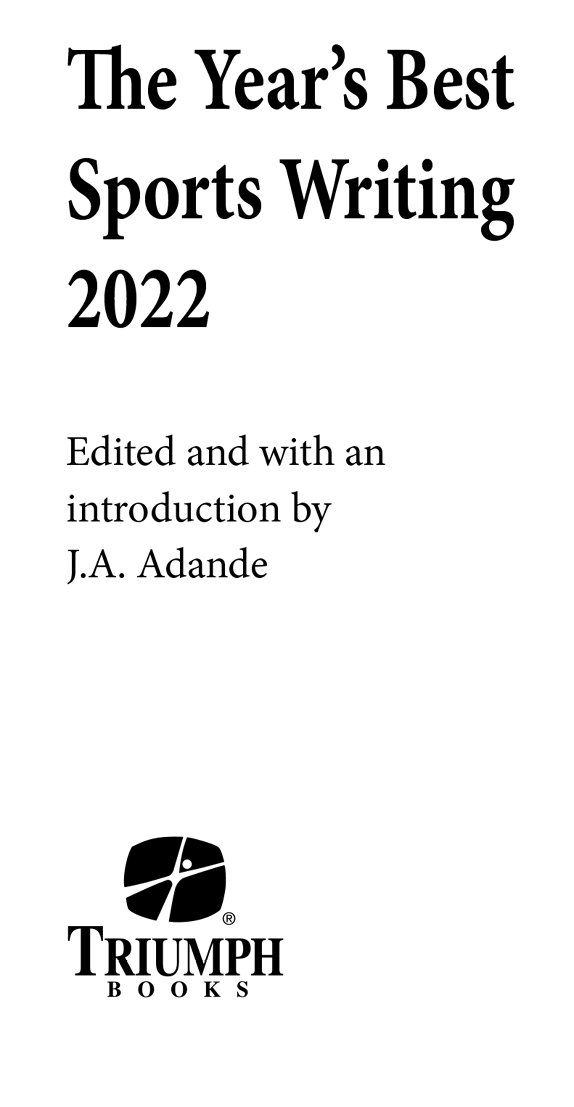
Contents
JERRY BREWER From The Washington Post
MARCUS THOMPSON II From The Athletic
KELAINE CONOCHAN From ESPN
MATT CROSSMAN From Experience
CAMONGHNE FELIX From The Cut
XAN RICE From Long Lead
HOWARD BRYANT From ESPN
BILL PLASCHKE From the Los Angeles Times
Frankie DE LA CRETAZ From Sports Illustrated
CHUCK CULPEPPER From The Washington Post
WRIGHT THOMPSON From ESPN
THUC NHI NGUYEN From the Los Angeles Times
ANDREW LAWRENCE From The Golfers Journal
MIRIN FADER From The Ringer
DIANA MOSKOVITZ From Defector
KEVIN VAN VALKENBURG From ESPN
SALLY JENKINS From The Washington Post
SHAKER SAMMAN From Sports Illustrated
BRUCE JENKINS From the San Francisco Chronicle
ROBERTO JOS ANDRADE FRANCO From ESPN
MIKE PIELLUCCI From D Magazine
MARK EMMERT From The Des Moines Register and Iowa City Press-Citizen
SCOTT Fowler From the Charlotte Observer
TOVE K. DANOVICH From The Ringer
JACOB STERN From The Atlantic
PAT FORDE From Sports Illustrated
STEPHEN J. NESBITT From The Athletic
ZACH BARON From GQ
Introduction
Youre about to discover why this collection of stories youre holding that celebrates the art of sports writing is so different from The Art of Sportswriting.
The Art of Sportswriting (one word, more on that distinction later) was the cover story in the May/June 1987 edition of the Columbia Journalism Review , which sat on my nightstand throughout my last year of high school. I read and re-read the article countless times while I was a student, seeking inspiration for the career I already knew I wanted to pursue. In September of 2021, during one of my periodic purging and condensing of the old newspapers, magazines, and game programs in my garage, I came across the The Art of Sportswriting issue again. When I read it once more, three and a half decades later, I realized the article had led me astray all along.
The best part of sportswriting is still a reporter at the game telling us what happened, was its key line, the one that was put in boldface in a pull quote, the one that proved so, so wrong. For one thing, it violated the three-word maxim pounded into journalism students brains by professors everywhere: Show, dont tell. And journalists should not tell what happened, they should explain what happened. Explain why it matters and why we should care.
Thats what Marcus Thompson II did after Stephen Curry launched into suborbital flight in April of 2021. Curry averaged 37 points for the month, with four games with at least 10 three-pointers and five games with at least 40 points, but Thompson didnt fall into the trap of engaging in a Most Valuable Player debate. He recognized that this was something far beyond that, the type of play that might not be officially commemorated but will be historically referenced, cited by those in the know.
Thompsons story was the first that popped into my head after I was asked to edit the 2022 edition of The Years Best Sports Writing . His story, entitled Stephen Curry Is Not the MVPHes Something Much More, is sports writing in its classical form. The rest of the selections that fill out the book represent what sports writing has become: a peek into the psyche of high achievers, a celebration of accomplishments and an examination of failures, a study of how people interact, and a discussion of societal progress and lingering inequities. In other words, all of the things The Art of Sportswriting story feared would happen to the profession. Yes, feared. It called the proliferation of feature stories a danger. And the next-to-last paragraph contained this admonition: Sportswriters seem to forget that the game is more important than the people who play it.
When I read that as a teenager I didnt dare challenge it. Now, after 15 years of working at major newspapers and a decade at ESPN, I feel confident enough to reset the order: People, then the games.
If youve read any of the previous incarnations of series editor Glenn Stouts annual best sports writing collections, youve seen very few game recaps. And thats not the only rebuke of the main premise of The Art of Sportswriting. Youll notice the books spell sports writing with two words, not one.
That was the first decision made when the series was created, Stout explained in an email. Sports writing writing about sportsis a less narrow definition than sportswriting per se, which most readers think of as what you find on the sports page. It allowed the book to consider and include a wider variety of writing.
Amazing how much liberty can be gained simply by inserting a space into a word. Ironically, the main way I employed the freedom and wide range of options that were given to me when I was presented the opportunity to edit this years bookwas to find ways to shrink the eligibility parameters. That was the only way to cut the vast array of quality articles to a manageable number.
I received hundreds of submissions from writers and their colleagues after I announced my guest editing role on Twitter. I also sought suggestions from Stout and a panel that consisted of: Paola Boivin, director of the Cronkite News Phoenix Sports Bureau at Arizona State University; Richard Deitsch, media reporter at The Athletic; Greg Lee, senior assistant managing editor at the Boston Globe ; and Iliana Limn Romero, deputy sports editor of the Los Angeles Times . Im grateful to them for bringing attention to stories I might otherwise have missed and for making clear which stories I had to include, by consensus.
Each of their lists looked vastly different. That was the point of including them in the process. It also reinforced the difficulty and subjectivity of this assignment. It meant I had to arrive at my own definition of the best part of sports writing.
My first step was to separate sports writing from sports journalism. As impressive and important as, say the reporting by The Athletic on sexual misconduct in the NWSL or by The Washington Post on the toxic workplace environment for the local NFL team, it wasnt the writing that made them stand out. They were significant because they uncovered secrets and brought some leveling to the power imbalance. They werent examples of great sports journalism, they were examples of great journalism. Period. But they werent what I was looking for.
I was looking for stories that felt important specifically because of their writing, writing that grabbed your attention right away and never relinquished it, writing that took you on a journey.
I decided this collection would consist of stories that were focused on sports in a way specifically related to 2021, not merely stories that had a connection to sports that were written in 2021. That meant stories about current athletes, not former athletes. Stories about the central figures, not people on the periphery, such as fans or media members. (If that makes you question the inclusion of Bill Plaschkes column on Felipe Ruiz, Tommy Lasordas trusted assistant in the last years of Lasordas life, the Los Angeles native in me has a counter-argument: You wont find a greater feat of endurance in the entire book than the day Ruiz drove Lasorda from his home in Fullerton to his office at Dodger Stadium to a lunch appearance in Manhattan Beach to dinner in Ontario and finally back to Fullerton at 2:30 a.m.).
And why did a story about the ex-wife of an assistant football coach fit my definition? Because the mounting evidence that Urban Meyer was unfit to be the head coach of the Jacksonville Jaguars became one of the biggest sports stories of 2021, and Exhibit A should have been Courtney Smiths claims that Meyer failed to properly act on her allegations that her husband, an assistant on Meyers staff at Ohio State, had abused her. Just because the images of Meyer with a woman at a restaurant that spread on social media seemed to have a bigger impact on Meyers downfall doesnt mean we should not recognize the importance of Courtneys Story by Diana Moscovitzand the way Moscovitzs word usage made the story so memorable.


